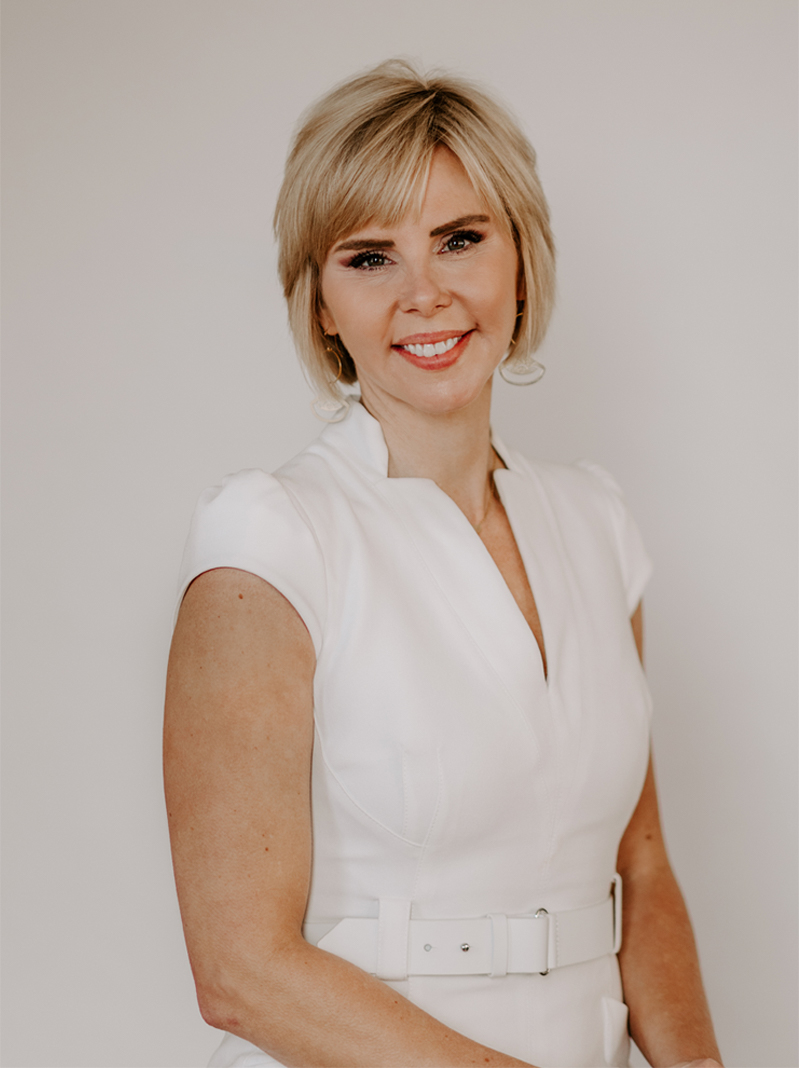


ULTHERAPY
Ultherapy uses safe, time-tested ultrasound energy to lift and tighten the skin naturally—without surgery or downtime and our experienced dermatologists will use Ultherapy to transform your lines and wrinkles!
The Non-invasive Lift
Ultherapy is the only non-invasive procedure FDA-cleared to lift skin on the neck, under the chin and eyebrows and is now also FDA-cleared to improve the appearance of lines and wrinkles on the décolletage! Ultherapy can help you achieve a fresher, more youthful look from your brow to your chest – Choose non-invasive Ultherapy today.
Ultherapy harnesses the power of ultrasound to transform the brow, chin, neck and chest. Ultrasound, of course, has been used safely throughout the medical field for more than 50 years—and Ultherapy has been established as safe and effective in clinical studies and in more than 350,000 treatments worldwide.
Ultrasound Accuracy.
Ultherapy relies on ultrasound therapy to deliver its collagen-boosting treatment. It also incorporates traditional ultrasound imaging, which allows practitioners to see the layers of tissue they are treating, ensuring the treatment energy is delivered to where it will be most beneficial.
Complement your Ultherapy treatment with a liquid face lift, and anti-wrinking and anti-agining treatments!
Contact us today to schedule your Ultherapy appointment in Frederick!
Interested in learning more about this procedure? Contact us today for more information.
Tell us a little about yourself. A member from our Concierge Team will get back to you shortly with next steps, and a plan of action.
FREQUENTLY ASKED QUESTIONS
How long do results last?
What side effects should I expect?
A dimpled or thinner spot has been reported but is rare. It may be from affects on the fat or prior filling agents and is treatable. Deep treatment is not recommended directly around the mouth or sides of the chin because if the heat irritates the nerve there, it can cause a temporary inability to move that side of the mouth normally. However, when the current treatment protocol is used, ultherapy is a safe and effective treatment.
Is Ultherapy safe?
Does Ultherapy hurt?
Who is a good candidate for Ultherapy?
How is Ultherapy different from other cosmetic procedures?
It also is the only procedure to use ultrasound imaging, which allows us to actually see the layers of tissue we target during the treatment and ensure the energy is deposited precisely to where it will be most effective. With the ability to penetrate into the deeper levels of tissue, ultherapy is more effective than its predecessor, thermage.
How many treatments does it take?
What other procedures are commonly used in combination with ultherapy to maximize non-invasive results?
For the lower 1/2 of the face, dermal filler, like Restylane or Juvederm products can be used to replace volume in the face and maximize lift. When re-inflation occurs of shrinking fat pads in the mid and lower face, one can achieve outstanding, natural looking results. Botox and Dysport can also be used along the jowl line (called the Nefertiti Lift) in order to create more definition in one’s jowl line when sagging is a complaint.
For the brow, we can achieve even more lift when we combine Botox or Dysport. When you relax the muscles pulling down on the brow, you get a naturally looking brow lift that is a great supplement to an Ultherapy treatment.
What about treating anatomical regions other than the face?
If my budget is limited, should I do Ultherapy or fillers?
What does collagen do? How does Ultherapy stimulate the creation of collagen?

WELCOME TO FREDERICK, MD
Frederick Dermatology Associates has put Frederick, MD on the map as a regional authority on skin health and wellness. With an emphasis on building a natural, refreshed look in our patients, we focus on innovations in cosmetic, medical and aesthetic dermatology, backed by experience and supervision by our board-certified dermatologists. Whether you’re local or out of town, consider Frederick, MD as your destination for excellence in dermatology.
A PATIENT-FIRST APPROACH
GET THE MOST OUT OF YOUR FDA EXPERIENCE!
Introducing the Frederick Dermatology Associates Loyalty Program! Remember to get your loyalty card stamped for products and services purchased to earn your way to a free Aura brand product (some conditions apply).
LOOKING FOR DEALS?
Sign up to be added to our email list to receive exclusive promotional offers on all of our body shaping services.


